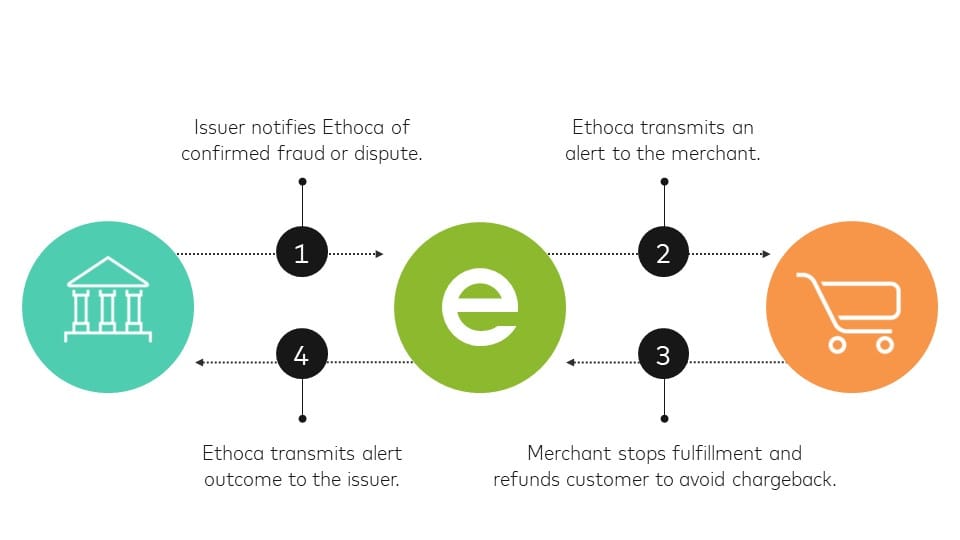
SuperPay helps barbers like yourself get paid as quickly as possible. Choose our platform to power your payments & billing.
Are you a barber shop owner looking to take your business to the next level? Expanding your barber shop business regionally could be the key to achieving greater success and reaching a wider customer base. In this blog post, we will explore the importance and benefits of regional expansion, as well as the steps involved in identifying potential regions, developing a strategy, implementing the expansion plan, and monitoring its progress. Whether you're a seasoned entrepreneur or a first-time business owner, this guide will provide you with valuable insights and practical tips to help you navigate the process of expanding your barber shop business regionally. So, let's get started and take your barber shop to new heights!
Understanding the Basics: Importance and Benefits of Regional Expansion
Expanding a barber shop business regionally can bring numerous benefits and contribute to the overall growth and success of your enterprise. In this section, we will delve into the importance and advantages of regional expansion, providing you with a solid foundation for your decision-making process.
Why is Regional Expansion Important?
Increased Market Reach: By expanding your barber shop business regionally, you can tap into new markets and reach a broader customer base. This allows you to attract more clients and generate higher revenue.
Diversification of Revenue Streams: Operating in multiple regions helps to spread your business risk. If one region experiences a downturn, you can still rely on the revenue generated from other locations.
Competitive Advantage: Expanding regionally allows you to stay ahead of the competition. By establishing a presence in new territories, you can position your barber shop as a leader in the industry and gain a competitive edge.
Brand Recognition and Reputation: Regional expansion provides an opportunity to build brand recognition and enhance your reputation in the market. A strong brand presence can attract new customers and create loyalty among existing ones.
Benefits of Regional Expansion
Increased Profitability: With a larger customer base and more revenue streams, regional expansion can significantly boost your profitability. It allows you to leverage economies of scale and optimize your operations.
Opportunities for Growth: Expanding regionally opens up avenues for growth and development. It enables you to explore new markets, introduce innovative services, and expand your service offerings.
Enhanced Customer Convenience: By establishing multiple locations, you can provide convenience to your customers. They no longer have to travel far distances to avail your services, increasing their satisfaction and loyalty.
Access to Talent Pool: Regional expansion often means accessing a larger pool of skilled barbers and staff. This allows you to recruit top talent and build a strong team, further improving the quality of service you provide.
Improved Negotiating Power: Operating in multiple regions gives you stronger negotiating power with suppliers and vendors. You can secure better deals and favorable terms, leading to cost savings and improved profitability.
Understanding the importance and benefits of regional expansion sets the stage for the next steps in the process. It highlights the potential rewards awaiting you as you embark on expanding your barber shop business to new regions. Now, let's move on to the next section: identifying and evaluating potential regions for expansion.
Identifying and Evaluating Potential Regions for Expansion
Before embarking on regional expansion, it is crucial to identify and evaluate potential regions that align with your business goals and have the potential to support the growth of your barber shop. In this section, we will explore the key factors to consider and the steps involved in identifying and evaluating the viability of potential regions for expansion.
Market Research and Consumer Trends
Demographic Analysis: Conduct a thorough analysis of the demographic characteristics of potential regions. Consider factors such as population size, age distribution, income levels, and cultural diversity to determine if there is a suitable target market for your barber shop services.
Market Demand: Assess the demand for barber shop services in the potential regions. Look at factors such as the number of existing barber shops, customer preferences, and any gaps or untapped opportunities in the market.
Trends and Preferences: Stay updated on the latest trends and preferences in the barber shop industry. Research consumer behavior, hairstyle trends, grooming preferences, and any emerging market demands that could influence the success of your expansion.
Assessing Competition in Targeted Regions
Competitor Analysis: Identify and analyze the existing barber shops and salons in the potential regions. Evaluate their strengths, weaknesses, pricing strategies, service offerings, and customer base. This analysis will help you understand the competitive landscape and identify opportunities for differentiation.
Market Saturation: Assess the level of market saturation in the potential regions. Determine if there is room for additional barber shops or if the market is already saturated with intense competition.
Unique Selling Proposition: Identify your unique selling proposition (USP) and evaluate how it can differentiate your barber shop from the competition. Determine if your USP aligns with the preferences and needs of the target market in the potential regions.
Economic and Demographic Factors to Consider
Economic Indicators: Evaluate the economic indicators of potential regions, such as GDP growth, unemployment rates, and disposable income levels. Regions with a stable and growing economy are more likely to support the success of your expansion.
Regulatory Environment: Understand the regulatory environment and business requirements in the potential regions. Familiarize yourself with licensing, permits, zoning regulations, and any other legal considerations that may impact your expansion plans.
Infrastructure and Accessibility: Assess the availability and quality of infrastructure in the potential regions, including transportation, communication, and utilities. Consider how accessible these regions are for both customers and your operational needs.
By conducting comprehensive market research, assessing competition, and considering economic and demographic factors, you can identify and evaluate potential regions that offer the best opportunities for your barber shop expansion. Armed with this knowledge, you can move forward with confidence in developing a regional expansion strategy, which we will explore in the next section.

Developing a Regional Expansion Strategy
Developing a regional expansion strategy is a crucial step in successfully expanding your barber shop business. In this section, we will outline the key components and steps involved in creating a robust strategy that will guide your expansion efforts.
Setting Expansion Goals
Define Your Objectives: Clearly define your goals and objectives for regional expansion. Are you aiming to increase revenue, establish a strong brand presence, or reach a specific target market? Setting clear and measurable goals will help you stay focused and track your progress.
Identify Key Performance Indicators (KPIs): Determine the KPIs that will measure the success of your expansion efforts. Examples of relevant KPIs include revenue growth, customer acquisition rate, customer retention rate, and market share.
Developing a Marketing and Branding Strategy
Target Market Analysis: Refine your understanding of the target market in the selected regions. Identify their demographics, preferences, and behaviors to tailor your marketing and branding strategies accordingly.
Positioning and Differentiation: Develop a unique value proposition that sets your barber shop apart from competitors. Highlight your strengths, such as specialized services, exceptional customer experience, or a specific niche market.
Marketing Channels: Determine the most effective marketing channels to reach your target audience in the selected regions. This may include online platforms, social media, local advertising, partnerships, and community engagement.
Brand Consistency: Ensure brand consistency across all locations by establishing clear brand guidelines, including visual elements, messaging, and customer experience standards. This consistency will help build a strong and recognizable brand presence.
Building a Financial Plan for Expansion
Budgeting and Financing: Develop a detailed budget for your regional expansion, considering factors such as location setup costs, marketing expenses, hiring and training costs, and ongoing operational expenses. Explore financing options, such as loans or investors, to support your expansion plans.
Financial Projections: Create financial projections for the expansion period, including revenue forecasts, expenses, and cash flow analysis. This will help you assess the financial feasibility of your expansion and make informed decisions.
Risk Assessment and Mitigation: Identify potential risks and challenges that may arise during the expansion process. Develop risk mitigation strategies to minimize the impact of these risks on your business.
By focusing on setting clear expansion goals, developing a targeted marketing and branding strategy, and building a solid financial plan, you will lay the foundation for a successful regional expansion of your barber shop business. The next section will delve into the implementation phase, where we will discuss finding the right locations, recruiting and training staff, and managing operational challenges during the expansion process.
Implementing the Expansion Plan
Implementing the expansion plan is a critical phase in expanding your barber shop business regionally. This section will guide you through the key steps involved in successfully executing your expansion plan.
Finding the Right Location
Location Research: Conduct thorough research to identify potential locations within your targeted regions. Consider factors such as population density, demographics, foot traffic, accessibility, and competition. Evaluate the suitability of each location based on your target market and business objectives.
Lease or Purchase: Decide whether to lease or purchase the property for your new barber shop locations. Evaluate the financial implications, long-term goals, and flexibility of each option to make an informed decision.
Site Visits and Due Diligence: Visit potential locations to assess their suitability firsthand. Consider factors such as visibility, parking availability, infrastructure, and proximity to complementary businesses. Perform due diligence by reviewing lease agreements or conducting property inspections.
Recruiting and Training Staff
Staffing Needs: Determine the staffing requirements for your regional expansion. Assess the number of barbers, receptionists, and support staff needed to meet the anticipated demand in each location. Consider the qualifications, experience, and cultural fit of potential employees.
Recruitment Strategies: Develop effective recruitment strategies to attract qualified candidates. Utilize online job portals, social media platforms, and local advertising to reach potential applicants. Conduct thorough interviews and background checks to ensure you hire the right individuals.
Training and Development: Implement comprehensive training programs to onboard and train new employees. Focus on standardizing service quality, customer service, product knowledge, and adherence to your brand's values and guidelines.
Managing Operational Challenges during Expansion
Supply Chain Management: Ensure a smooth supply chain process by establishing relationships with reliable suppliers. Coordinate product orders, inventory management, and delivery logistics to meet the demands of your new locations.
Operational Standardization: Maintain consistency across all locations by establishing clear operational guidelines and procedures. Standardize processes such as appointment scheduling, customer service protocols, and quality control measures.
Communication and Collaboration: Foster effective communication and collaboration among your team members across different locations. Utilize technology tools, such as project management software and video conferencing, to facilitate seamless communication and information sharing.
Customer Experience: Prioritize providing an exceptional customer experience at all your locations. Ensure consistency in service quality, cleanliness, ambiance, and attention to detail. Regularly gather customer feedback to identify areas for improvement and address any concerns promptly.
By carefully selecting the right locations, recruiting and training competent staff, and effectively managing operational challenges, you can successfully implement your expansion plan and ensure the smooth operation of your barber shop business across multiple regions. The next section will focus on monitoring and evaluating the progress of your expansion to make data-driven decisions for further growth.
Monitoring and Evaluating the Expansion
Monitoring and evaluating the expansion of your barber shop business regionally is crucial to ensure its success and make informed decisions for further growth. This section will explore the key steps involved in monitoring and evaluating your expansion efforts.
Tracking Performance Metrics
Financial Performance: Regularly review financial metrics such as revenue, expenses, profit margins, and return on investment (ROI) for each location. Compare actual performance against projected targets to identify any discrepancies and take corrective actions if needed.
Customer Metrics: Monitor customer-related metrics such as customer acquisition rate, customer retention rate, average transaction value, and customer satisfaction scores. Use customer feedback mechanisms, such as surveys or online reviews, to gather insights about your service quality and make necessary improvements.
Operational Efficiency: Assess operational metrics, including staff productivity, utilization rates, appointment bookings, and response times. Identify areas where operational efficiency can be improved to optimize resources and enhance customer experience.
Customer Feedback and Market Response
Customer Surveys: Conduct regular customer surveys to gather feedback about their experiences at your barber shop. Ask specific questions about service quality, wait times, cleanliness, staff professionalism, and overall satisfaction. Analyze the results to identify trends, strengths, and areas for improvement.
Online Reviews and Social Media Monitoring: Monitor online reviews and social media platforms to gauge customer sentiment and identify any issues or concerns. Respond promptly to customer reviews, both positive and negative, to show your commitment to customer satisfaction.
Competitor Analysis: Continuously monitor the activities and performance of your competitors in the targeted regions. Analyze their pricing strategies, service offerings, marketing campaigns, and customer engagement initiatives. Identify opportunities to differentiate yourself and stay ahead in the market.
Adjusting the Strategy Based on Results
Review and Analysis: Regularly review the data and insights gathered from performance metrics, customer feedback, and market response. Analyze the results to identify trends, strengths, weaknesses, and areas for improvement.
Strategy Revisions: Based on the analysis, make necessary revisions to your regional expansion strategy. Adjust marketing tactics, operational processes, staffing levels, or pricing strategies to align with customer preferences and market demands.
Continuous Improvement: Embrace a culture of continuous improvement by encouraging feedback from employees, implementing their suggestions, and fostering a learning mindset within your organization. Regularly communicate and share best practices across all locations to drive innovation and growth.
By closely monitoring performance metrics, gathering customer feedback, and analyzing market response, you can make data-driven decisions and adjustments to your regional expansion strategy. This iterative process will help you optimize your operations, enhance customer satisfaction, and drive the long-term success of your expanded barber shop business.
Congratulations on completing this comprehensive guide to expanding your barber shop business regionally. You now have the knowledge and insights to embark on this exciting journey of growth and take your barber shop to new heights. Good luck!


